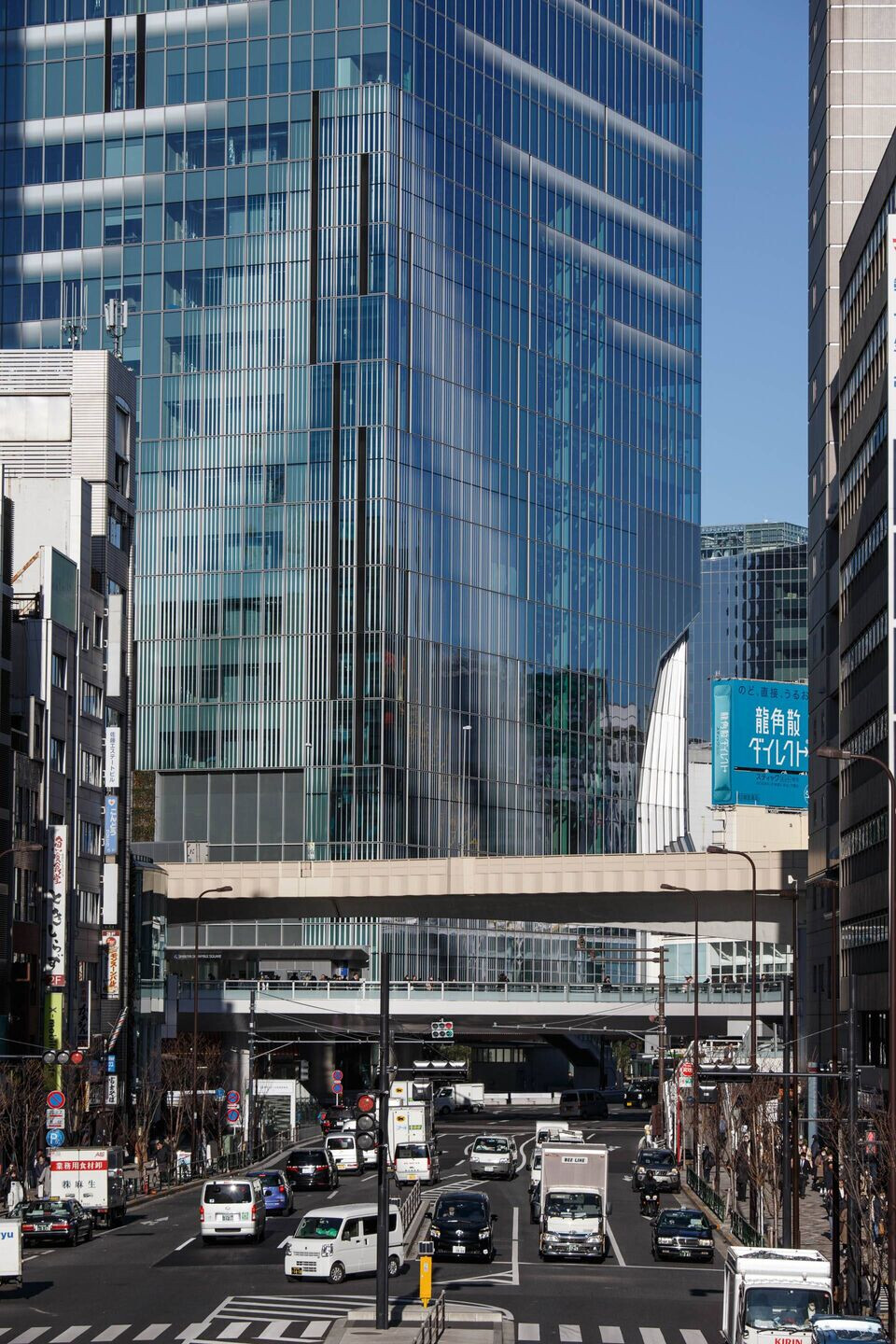Shibuya Station, the heart of Tokyo’s consumer culture, is Japan’s representative transportation hub for nine railway lines bringing 3.3 million passengers in and out every day. Aiming for a safe and pleasant city for all the visitors,in addition to its traffic convenience, Shibuya’s central area has been undergoinga major urban redevelopment withnumerous projects to improve traffic flows around the station,construct disaster-resistant facilities, attract new industries such as IT, and enhance its global appeal as the cultural capital. Shibuya Scramble Squareisthe model project of urban redevelopment planning including a station, which stands right above Shibuya Station and consists ofhigh-end offices, large-scale commercial facilitiesa co-creation facility, and an observatory.The shape of the districtaround the station is as complexandinhomogeneous asthe chaotic townitself. The project has three distinctive design featuresreflectingthe district’s characteristics.

“Urban Core” – Urban space connecting vertical movements
Because of the valley topography peculiar to this area, the arterial roads dividing the town, andrelocation and extension/reconstruction repeated by railway companies,Shibuyawas fragmentedand became a citythat is difficult for pedestrians to navigate.In order to solve these problems, thevertical atrium space dubbed asthe “Urban Core” was designed to realize smooth longitudinal movements.The Urban Core made its presence known in the city with its unique “dented” tower form.Its façade featuresrows of louvers spiraling upwards, breaking up its enormous scale to providea sense of continuity with the surrounding urban landscape.

Drawing eyes to the corners – Design to connect the super high-rise and the city below
In Shibuya, roads and railways radiate out from its center on the valley floor, making “corners” more visible than “sides.” The tower is designed to draw the eye towards its corners to correspond to the town’s urban landscape. Each pane of Low-E glass on the façade is over four meters tall. The shape of the panes transforms slightly on the tower’s corners, changing the appearance of their reflections. The white ceramic print placed over the glass panes is designed to increase its transparency towards the corners to create a visual flow. The flow starting at the lower portion of the building continues upwards to the rooftop observation deck just as the tower rising from the street to the sky.


“SHIBUYA SKY” – Observatory for escaping the city while being in it
The 230m-talltower is crowned with theobservatory, SHIBUYA SKY,featuring an outstanding panoramic view of Tokyo.This vast observatory deck is intentionally left empty to free visitors from the hustle and bustle of the city.The deck’s perimeter is surrounded by transparentglass screens to providethe unobstructed 360-degree view and allow visitors to simultaneously feel Tokyo’s dynamic energy and a sense of unity with the sky.As a new floating public space, SHIBUYA SKY connects Shibuya’s radiating townscape and rising skyscrapers.

Material Used:
Steel, Steel Reinforced Concrete, Reinforced Concrete




































